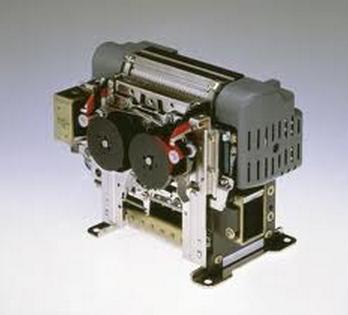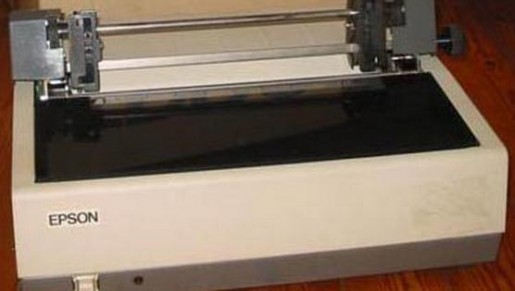Were the Olympics Responsible for the Creation of Your Printer?
Here is the latest in a series of examinations into urban legends about the Olympics and Olympians and whether they are true or false. Click here to view an archive of the Olympic urban legends featured so far.
OLYMPIC URBAN LEGEND: The Olympics led to a watch company becoming one of the largest printer manufacturers in the world.
The development of new technologies has had a dramatic effect on the world of sports over the years. Take the development of video technology for television broadcasts of sports games. The ability to watch a play again instantly has come to affect pretty much every major U.S. sport. While some professional leagues have been slow to accept it, the usage of instant replay to decide close plays is now a part of most U.S. sports and is only becoming more important as the years go by (note the National Football League added a rule for the 2011 season that all scoring plays are now automatically reviewed on video to see if they were proper scores). While that is an example of a technology that was developed independent of sports being adapted to the world of sports, there are other technological advancements that were examples of athletes having a need that someone developed a technology to address. For instance, Dr. Frank Jobe inventing a procedure where he removes a tendon from one part of a pitcher’s body and uses it to replace a damaged one in a pitcher’s elbow (the so-called “Tommy John Surgery”) would have sounded like science fiction in the early days of baseball, but the procedure has saved countless careers that otherwise would have been lost. Current pitchers as varied as John Axford, AJ Burnett, Shawn Marcum, Stephen Strasburg, Brian Wilson and CJ Wilson all would likely not be Major Leaguers now if it were not for Jobe’s procedure.
The connection between the sports need and the development of Tommy John Surgery is a bit obvious. Much less obvious, though, is the fact that the world of sports also led to the creation of the modern day desktop printer. Read on to learn how sports turned a watch company into one of the leading manufacturers of desktop printers in the world.
Throughout much of the history of the Olympic Games, the Olympics’ time-keeping needs had been met mostly by Swiss watch companies, mostly famously the Société Suisse pour l’Industrie Horlogère (SSIH) Group, manufacturers of the Omega timepiece. Now part of the Swatch Group, the makers of the Omega timepiece were the official timekeepers for the most recent Olympics. Of course, things have changed a little bit since their first Olympics in 1932. Back then, they sent over a watchmaker and three dozen or so stopwatches. For the 2010 Olympics, they provided over 200 timekeeping personnel and over 200 tons of timing equipment. The major difference in those days as opposed to now is that electronic timekeeping was not used. In fact, electronic scores were not officially used for all Olympic events until the 1968 Games. Before then, it literally was a person with a stopwatch keeping time. This slowly began to change in the late 1950s/early 1960s with the advent of using computers to track time. For the 1964 Olympics held in Tokyo, Japan, the International Olympic Committee (IOC) selected a Japanese company, Suwa Seikosha Co., Ltd, manufacturers of Seiko watches, to be the official timekeeper of the Olympics. The corporation had formed a subsidiary called Shinshu Seiki Co. to develop precision parts for their watches. It was this subsidiary that was taxed with an important duty for the 1964 Games. You see, if they were going to track some of the events with electronic timekeeping, they would need to have access to those scores right away. So they were forced to come up with a way to print out the scores on to paper. Therefore, the company developed a portable electronic printer that they could use to print out their times. This was not the only innovation debuted by the company at the 1964 Games. They also introduced new quartz timing technology and advanced liquid crystal displays (LCD) that were major success for the company in their products for years to come. However, the quartz and LCD technology were natural evolutions of their timekeeping products. Their new printing technology, though, was very much an offshoot.
After the Games, though, the company realized the utility of the printing device that they had just invented. Electronic printers had certainly existed at this point (Xerox and IBM both made them), but they tended to be quite larger. So Shinshu Seiki began manufacturing their compact electronic printer in 1968. It was called the EP-101.

By 1975, they had a new subsidiary called Epson America (“son” of the EP printer) that specialized in micro-computer parts like their small electronic printers. Initially, they sold their printers to other companies who included them with their products, but soon Epson began selling their own printers and devices. Their dot matrix printer released in 1978 was a smash success.
Their printing technology became a major part of calculators of the era, allowing print calculators and cash registers to get smaller and smaller. Obviously, over the years, the technology that made them so avant garde in the 1960s and 1970s became out-of-date, but by this time they had already become one of the world’s largest printer companies (and had adapted to the new printer technologies, like inkjet printing). In 1982, Shinshu Seiki re-named itself the Epson Corporation and eventually it merged with Suwa Seikosha Co. in 1985 to form Seiko Epson, which the company remains known as to this day.
And all because they needed a way to print out their scores for the Olympics. Pretty darn cool.
The legend is…
STATUS: True
Feel free (heck, I implore you!) to write in with your suggestions for future urban legends columns! My e-mail address is bcronin@legendsrevealed.com
Tags: EP-101, Epson America, International Olympic Committee, Omega timepiece, Seiko, Seiko Epson, Shinshu Seiki, Société Suisse pour l’Industrie Horlogère Group, SSIH Group, Suwa Seikosha Co., Suwa Seikosha Co. Ltd






